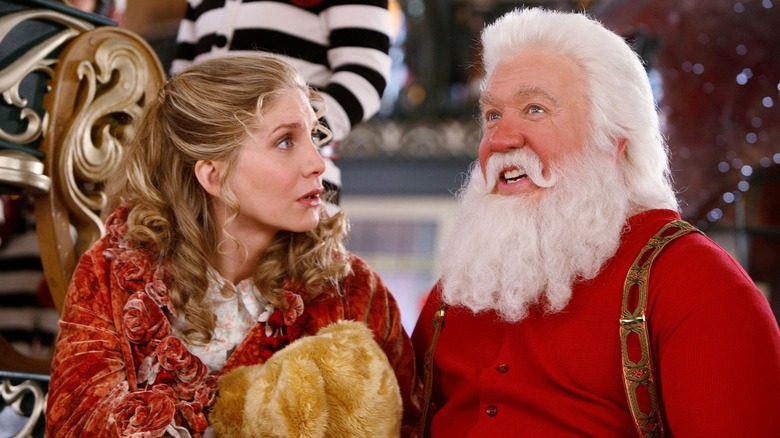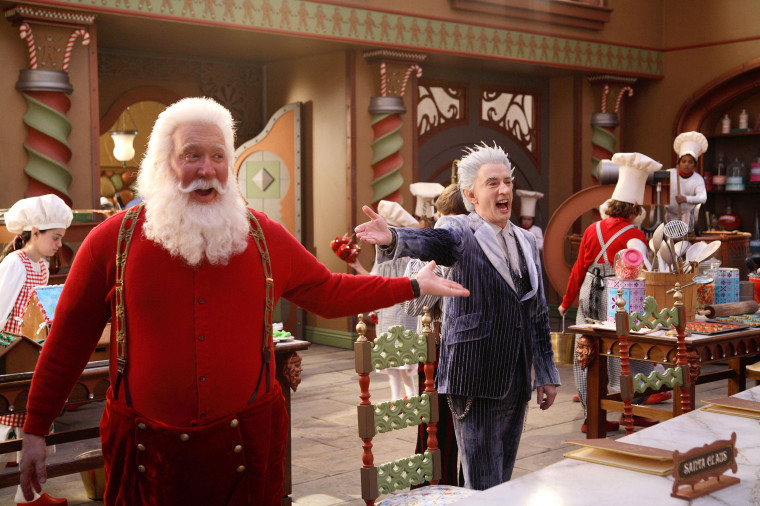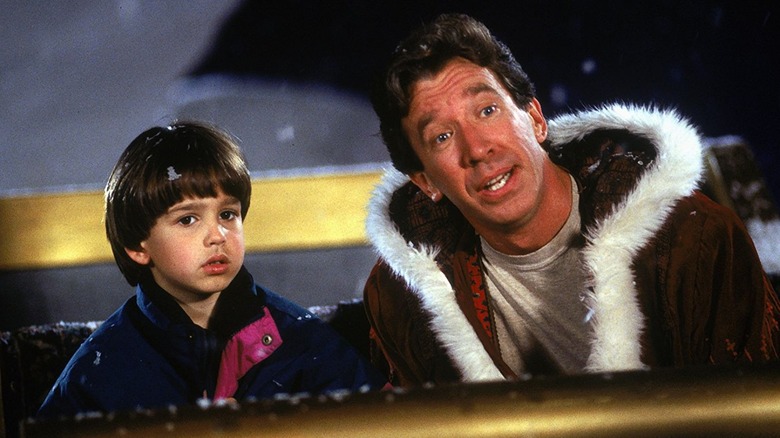🎄 The Last Gift of Belief: A Review of The Santa Clause 4 (2025)

There are few cinematic journeys that grow up with their audience — The Santa Clause saga is one of them. Thirty years after the first film made us laugh, dream, and believe, The Santa Clause 4 (2025) returns not as a spectacle of snow and sleighs, but as a gentle, heartfelt meditation on time, memory, and the fragile endurance of wonder.

Tim Allen’s return as Scott Calvin feels less like a comeback and more like a reunion with an old friend — the kind who has seen both joy and loss, who still smiles through the frost. His Santa is no longer the wide-eyed miracle-maker of decades past; he’s a man facing the quiet ache of legacy, questioning whether the world still needs him. The beard is grayer, the laugh softer — but the warmth remains, glowing through every scene like the last ember of a winter fire.
The story begins with a shiver of melancholy. The reindeer grow tired, the elves whisper about change, and the snow globe — once radiant with magic — begins to dim. The North Pole itself feels older, as though time has brushed even the immortal with its cold hand. The film’s beauty lies in that stillness — in its willingness to let Christmas feel human.

But beneath the nostalgia beats a pulse of renewal. Scott’s journey isn’t about saving Christmas; it’s about rediscovering why it matters. Through his family, his memories, and the children who still write letters into the frost, he learns that the magic of belief doesn’t fade — it evolves. It passes down, reshaped by love.
Allen delivers one of his most touching performances to date — playful yet profoundly tender. His humor carries the comfort of home, while his moments of doubt carry the weight of every adult who once stayed up too late watching for reindeer tracks. There’s a vulnerability to his Santa that’s never been shown before — a man who gave the world joy but forgot how to keep it for himself.
Visually, The Santa Clause 4 is a love letter to the holidays. The cinematography glows with golden fires, crystalline forests, and starry skies that feel almost alive. The North Pole, once bursting with energy, now feels more intimate — less a workshop, more a memory. Every light flicker and snowflake seems to whisper, Remember.

The supporting cast brings gentle humor and heart, grounding the fantasy in family. The younger generation — Scott’s children, wide-eyed yet uncertain — become mirrors of his own doubt. Through them, the film quietly teaches that belief isn’t about proof, but persistence.
Directorial choices favor emotion over action. There are no explosive sequences or grand villain arcs — instead, there’s reflection. A hand brushing over an old toy, an elf lighting a candle in the dark, a father telling a story to his child. These are the true miracles the film wants us to see — not in thunder or spectacle, but in the quiet endurance of love.
The soundtrack, swelling with orchestral nostalgia and soft carols, feels like memory set to music. Each note seems to reach backward in time, echoing the warmth of the original trilogy while embracing the melancholy of growing older.
By the time the snow globe glows again, we realize that The Santa Clause 4 isn’t about saving Christmas from fading magic — it’s about saving it from forgetfulness. It’s a story for those who once believed and thought they’d outgrown it, only to find that belief doesn’t die — it waits.
4.7/5 — “Tender, timeless, and quietly transcendent.”
The Santa Clause 4 reminds us that Christmas isn’t a day or a myth — it’s a memory carried forward, glowing in each act of kindness and each spark of faith. Because even legends, after all, must learn to believe again.











